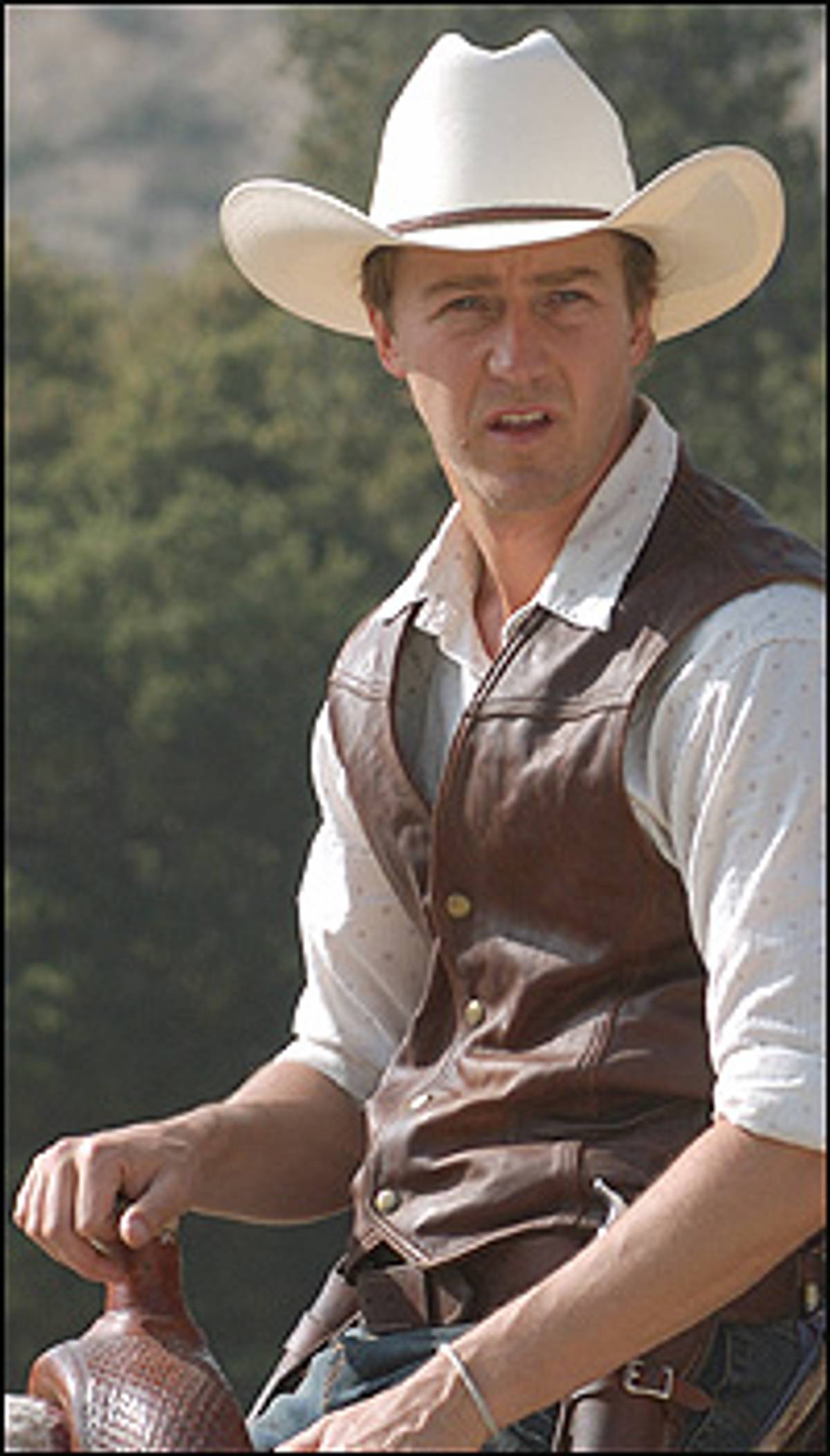Down in the Valley has only begun to strain belief when would-be cowboy Harlan Fairfax Carruthers, played with eager charm by Edward Norton, wanders unexpectedly into a Hasidic synagogue in Los Angeles. His white Stetson amongst all those black hats looks at first like a sight gag out of The Frisco Kid. But this film is unquestionably earnest. Among the many secrets this drifter hides beneath a leather vest stolen from the set of Shane and dialogue that should have died with John Wayne—”holy smoke” is just the beginning—is the family he’s left behind.

Maybe writer-director David Jacobson simply dug too deeply into his own upbringing—the spring, he has said, of the film’s sense of desolation. Yet one can’t help speculating why he thought the twist would work. Harlan descends into delusion, we’re to understand, out of an overwhelming desire for reinvention—a promise California has embodied for many. But he roots his new identity in an old Hollywood myth, the tired yet enduring emblem of the rugged American cowboy. On one visit to Tobe’s house, he admires her father’s Colt 45 as “something unchanged,” the gun, he says, used by Wyatt Earp—and not even a visit to a set where they’re wrapping a remake of My Darling Clementine, nor an encounter with the actor playing Earp, can disabuse him of the idea of the righteous vigilante-sheriff.
What to make then of Harlan’s Jewish roots? Holding fast to tradition, those men, wrapped in their tallits, represent a stark alternative to the West Coast promise of reinvention. Theirs is a culture Harlan has pawned as hastily as that menorah. Could it be that Hasids represent something actually unchanged, the “true voice” Harlan, born Martin, repeatedly claims to seek? Or are they simply devotees of a different myth, rooted farther East?